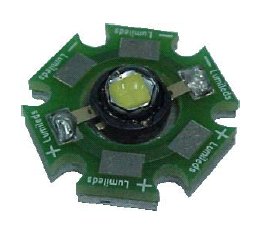Entropy
Enlightened
Re: HOW-TOs, TIPS-and-TRICKS, DEFINITIONS, EXPERIE
[ QUOTE ]
ChuckDecker said:
What is the meaning of "front voltage" (Vf)?
Does the word "front" refer to a physical location on the converter board or LED, or is this just the new term for voltage?
Thanks,
Chuck
[/ QUOTE ]
Vf is one of the specifications of the LED. I think it means "forward voltage", but the more specific definition is the forward voltage at which the LED will be operating at its rated current. For example, if a Luxeon has a 3.6v Vf, it will consume 350 mA at 3.6v. (Note: Even .1 volt above this and it will consume a LOT more, which is why LEDs are best driven with a constant current circuit.)
Vin is the input voltage to the converter. In step-up designs like the BadBoy and MadMax, Vf should ALWAYS be greater than Vin. If Vin exceeds Vf of the LED plus Vf of the diode in the converter (Usually this is between .2 and .6 volts), the converter no longer does anything and the LED is being directly driven from the input voltage.
I'm not sure, but I BELIEVE that the Wizard boards are flyback converters, which allow them to operate with Vin both above and below Vf.
[ QUOTE ]
ChuckDecker said:
What is the meaning of "front voltage" (Vf)?
Does the word "front" refer to a physical location on the converter board or LED, or is this just the new term for voltage?
Thanks,
Chuck
[/ QUOTE ]
Vf is one of the specifications of the LED. I think it means "forward voltage", but the more specific definition is the forward voltage at which the LED will be operating at its rated current. For example, if a Luxeon has a 3.6v Vf, it will consume 350 mA at 3.6v. (Note: Even .1 volt above this and it will consume a LOT more, which is why LEDs are best driven with a constant current circuit.)
Vin is the input voltage to the converter. In step-up designs like the BadBoy and MadMax, Vf should ALWAYS be greater than Vin. If Vin exceeds Vf of the LED plus Vf of the diode in the converter (Usually this is between .2 and .6 volts), the converter no longer does anything and the LED is being directly driven from the input voltage.
I'm not sure, but I BELIEVE that the Wizard boards are flyback converters, which allow them to operate with Vin both above and below Vf.


